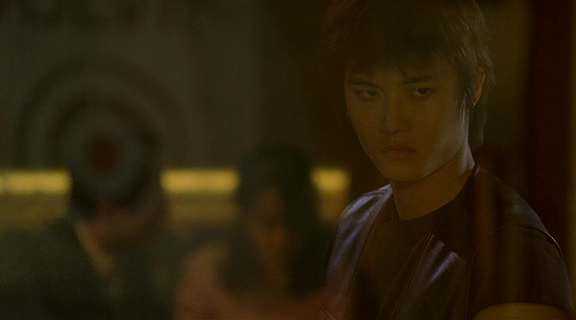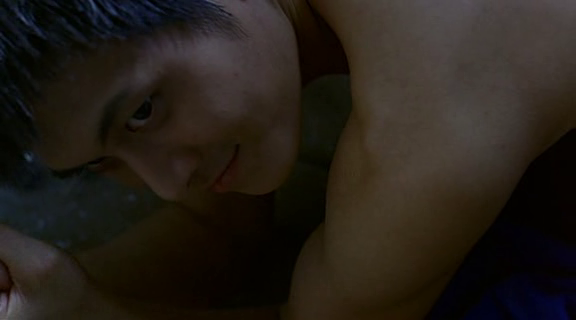Since a very early age I feel this innate tendency of trying to operate from inside my comfort zone. I have meant to do things without people knowing especially when they didn’t come across as even remotely doable. But at the same time there were always these deeply humanist emotions and overtly sentimental thought processes and now looking back I can never make out why the two character elements never clashed. The readers will probably invoke the analogy of a thief or a maniac of that sort and be either baffled or critique the idea that someone who is very much secretly functional can still implement the knowledge of boundaries. But I promise that the journey has not been easy, it gets difficult with every passing day.
In this write-up I will try to draw reader’s attention to two of my favorite characters created in the infinitely beautiful world of cinema and also expand on why my love for them is unconditional.
The first one is Tae-suk from 3-iron (2004) directed by Kim Ki-Duk. He is a loner, a drifter of a kind. The whereabouts of his own home and family have been kept aloof from the viewers. However, something that is clear is he loves houses and their interiors. I still remember the times during my schooldays when visiting any friend for the first time , the very first thing I did was to have a curious look out of his house. His study, drawing room, their furniture and then going through his stuffs, books, records, even pens or the way he arranges them. Their household activities caught my eyes and I quietly wished if I could live like them and with them for a few days. I can’t enough stress upon whether it was the cocoon of monotony trying to morph into a free butterfly or it was a yearning for togetherness but its’ true that I wanted to inhabit my fascinations. Tae-suk (played by Jae Hee) liked golf and he apparently played it with himself. In my case it was cricket, I used to throw a ball directly into the wall so that it bounced back at me as if from a bowler and then I hit it with a bat. Its’ obviously funny how I had to put a lot of effort to reach for the ball every time whereas for him the logistics were negligible. This is also how the movie got its’ name, 3-iron which is a type of golf clubs. But something that maybe I envy even more is how divinely he internalizes the capacity to go incognito. In my eyes he simply blends with the air, something we can feel but hardly touch or see and I would love to emulate this thing, provided only if the results are positive.

Something that I do confess I share with Tae-suk is his ability to fall in love the right way in life but the way he materializes it, is what I already covered for. He is compassionate in his love because to say that we love someone we are already yielding to a cause which we could choose to quit. We are selfish in love but I think it follows a clearly altruistic consciousness that forms first.
The readers are probably thinking at this moment…”houses, golf, air, love…where does all these connect”. Truth be told one cannot compromise with watching it because it is now a fact that a part of me always resided in one corner of the cinematic world and I just got to feel its’ presence in 2018(when I saw it first time) and since then I have lost count of how many times I have revisited it but I am sure it leaves me content to the very core of my heart. I can promise that if nothing does atleast Tae-suk’s zeal for love and life, without verbally expressing it, will impress your intelligence.

The second character is Hossain Sabzian from Close-Up (1990) directed by Abbas Kiarostami. Hossain Sabzian acts as himself in the film thus making it one of the greatest docudrama of all time. At this point I don’t know how much the film draws from real life, but if it does so concerning the judiciary proceedings I am grateful to Kiarostami for helping Hossain in his trial. I don’t think he deserved a prison life although it is true he is convicted but what we can’t just disregard is the distinctively beautiful soul of an artist. He is put into trial in the due process of societal laws and never for once he tries to justify the wrongdoing, instead he wins the hearts of a million cinephiles across the globe including the Ahankhahs family.
Hossain enthralls me with his honesty. For a substantial part in the film he is completely upfront and kind with the people around him and when he is not he is a passionate film lover. It is etched in my mind, how he looks into Kiarostami’s eyes and given the situation he could still say “You can make a film about my suffering”.

I am of the opinion that Hossain is a kind and considerate human being, but while he knows his responsibilities he never lets them overpower is identity. He is a considerate father, a family man and a dutiful son to a loving mother. But above all something that I will always advocate is forgetting everything how good an impersonator he is. Those were the days when acting in the name of games was a daily thing and evidently this memory is something that makes watching a well-acted stage drama today or a movie, a fascinating event in my life. It is still vivid how foolishly I used to imagine situations crafted in accordance with me, as if everything was a movie and I was the main man. I don’t know whether it was a conscious effort but coming terms with reality was never normal and being influenced by the fundamental elements of art I held on to a mental mise-en-scène, the dream world of imagery and acoustics.
He always knew what he was doing and given the resources he could shine as another feather in the crown of great Iranian directors. Even the imminent idol of the film, Mohsen Makhmalbaf can’t help but sympathize with Hossain throughout the beautiful ending sequence.
Hossain Sabzian died on September 26th, 2006 in Tehran but what he left is an undying legacy of a real life character whose influence looms large in the world of art.

So this is pretty much of what I understood and felt of these two characters of world cinema. I could ably and unhesitatingly illuminate their deepest chasms without giving away how they connected the dots and bestowed their directors with two very beautiful gems of art house cinema. In retrospect I recall reading blogs and diving into a ocean of madness we call cinema, so it is always through everyone’s own perusal to end up the happiest they would be after finding their favorite film characters. Ciao.
-Aniruddha Mukherjee
